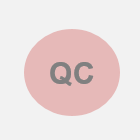 mirror sites:
PL (internal link)
HQ
[?]
mirror sites:
PL (internal link)
HQ
[?]
Quality Control and
Data Processing
|
GIRAFFE: Flat field quality
In addition to the fibre localization information, the flat field calibrations are taken in order to register the gain variations of the CCD (pixel to pixel, or fixed-pattern noise), fringing, and the fibre-to-fibre sensitivity variations. To properly record these properties, it is important to monitor the level of the flat field exposures, and avoid underexposure as well as saturation.  Exposure level (robotic flat field)
Exposure level (robotic flat field)
The exposure level obtained by the robotic flat-field lamp is routinely monitored in a pattern involving the L543.1 setup in every slit system ("HC settings"). A single flat frame is measured. The mean exposure level of the raw file is measured (including the fibre signal and the inter-fibre signal), trended and scored. Thresholds are defined to detect underexposure or overexposure. While the FFLEVEL plots monitor these standard setups regularly, the mean exposure level in all fibre flats is evaluated in a similar way in the FFLEVEL_ALL plots, but with the scoring thresholds being less sensitive since they cannot be fine-tuned for every single setting. Finally, the FFLEVEL_WLN plot records the mean exposure level over wavelength.
Panels of the trending plot:
Plots of spectrally resolved relative fibre transmission can be found here. Scoring&thresholds Exposure level (robotic flat field) The upper thresholds are set such as to indicate the danger of saturated pixels. They empirically take into account the effective mix of fibre signal and the inter-fibre signal. Likewise, the lower threshold indicates the danger of under-exposure. Ideally both thresholds would be the same, but the lower threshold is based on a compromise between optimal calibration quality (SNR) and operational constraints (required calibration time). The thresholds are used for the HC settings. All other settings would also need individual thresholds but are taken only sporadically (driven by science observations). Hence a threshold violation in a HC settings is taken as indication that the lamp flux level needs to be adjusted. In the trend_report_FFLEVEL_ALL_HC.html plot the HC settings are plotted in colour, and all other data (any setting) are plotted for comparison. Initially the fluctuations of the QC1 parameter were quite strong but then stabilized quickly. The actual values are comfortably below the saturation limit. The loss in quality for an individual raw flat is compensated by taking at least 3 identical flat exposures for the daytime calibrations. The HC plots FFLEVEL and FFLEVEL_ALL contain only the read mode 'Normal'. The non-standard read modes 'Slow' and 'Fast' are filtered out because of lack of comparison data. Algorithm Exposure level (robotic flat field) The mean exposure level of the raw file across the whole file is measured. Outliers beyond 60.000 ADU are counted as qc_numsat. For historical reasons the calculation is done by the QC procedure.  Saturation (robotic flat-field)
Saturation (robotic flat-field)
A saturated flat field can still be used for localization of the fibre signal (unless in extreme cases), but the information related to pixel-to-pixel gain variations, to fringing and to fibre-to-fibre sensitivity is lost in the saturated regions. Therefore all measured flats are monitored in terms of saturated pixels. The HC plot monitors all flat field data. The HC flats (L543.1) are displayed in colour.
Scoring&thresholds Saturation (robotic flat-field) This QC1 parameter is more sensitive to saturation than the mean_raw parameter (above). It is scored more tightly. The upper threshold is set to 1000 ADU which is more or less arbitrary but experience shows that data with higher values indeed have an issue. The upper threshold is set empirically, based on quality assessments for the few cases with some saturation. The lower threshold has no particular meaning. No historical issues. Algorithm Saturation (robotic flat-field) The mean exposure level of the raw file across the whole file is measured. Outliers beyond 60.000 ADU are counted as qc_numsat. For historical reasons the calculation is done by the QC procedure. |
|||||||||||||||||||||||||||||||||||||||||||||||||||||||||||||||||||||||||||||||||||||||||||||||||||||||||||||||||||||||||||||||||||||||||||||||||||||||||||||||||||||||||||||||||||||||||||||||||||||||||||||||||||||||||||||||||||||||||||||||||||||||||||||||||||||||||||||||||||||||||||||||||||||||||||||||||||||||||||||||||||||||||||||||||||||||||||||||||||||||||||||||||||||||||||||||||||||||||||||||||||||||||||||||||||
| |
||||||||||||||||||||||||||||||||||||||||||||||||||||||||||||||||||||||||||||||||||||||||||||||||||||||||||||||||||||||||||||||||||||||||||||||||||||||||||||||||||||||||||||||||||||||||||||||||||||||||||||||||||||||||||||||||||||||||||||||||||||||||||||||||||||||||||||||||||||||||||||||||||||||||||||||||||||||||||||||||||||||||||||||||||||||||||||||||||||||||||||||||||||||||||||||||||||||||||||||||||||||||||||||||||||
 |
|
|||||||||||||||||||||||||||||||||||||||||||||||||||||||||||||||||||||||||||||||||||||||||||||||||||||||||||||||||||||||||||||||||||||||||||||||||||||||||||||||||||||||||||||||||||||||||||||||||||||||||||||||||||||||||||||||||||||||||||||||||||||||||||||||||||||||||||||||||||||||||||||||||||||||||||||||||||||||||||||||||||||||||||||||||||||||||||||||||||||||||||||||||||||||||||||||||||||||||||||||||||||||||||||||||||



